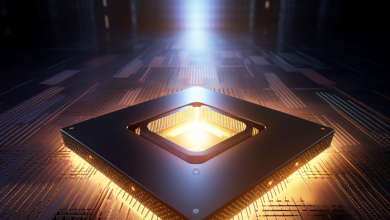Why This New SSD Could Make Your PC Run 10x Faster

The rise of Solid-State Drives (SSDs) has sparked a revolution in the world of personal computing, offering performance benefits that Hard Disk Drives (HDDs) can’t match. Recently, a new SSD entered the market that promises to increase your PC’s performance tenfold. This article will explore this ground-breaking innovation and how it achieves this lofty promise.
The Inner Workings of an SSD
SSDs store data using semiconductor cells, contrasting the mechanical approach of HDDs, which read and write data on a spinning disk. The use of semiconductors offers several advantages, including faster data access and no moving parts, leading to increased durability and decreased noise.
Unleashing Performance: The Key Differences in the New SSD
The new SSD that’s turning heads boasts a set of revolutionary features. Leveraging the latest technologies like 3D NAND flash memory, NVMe protocol, and PCIe Gen 4 interface, it maximizes data transfer speeds like never before.
3D NAND Flash Memory: Stacking Up Speed
3D NAND is the latest advancement in flash memory, stacking memory cells vertically in up to 128 layers. This vertical stacking allows for greater density, meaning more data can be stored in less physical space, resulting in faster data access.
NVMe and PCIe Gen 4: A Highway for Data
NVMe, or Non-Volatile Memory Express, is a protocol designed specifically for SSDs. It allows SSDs to connect directly to the PC’s CPU via the high-speed PCIe bus. The new SSD utilizes PCIe Gen 4, doubling the bandwidth available compared to PCIe Gen 3. This combination results in a high-speed data superhighway, enabling blisteringly fast data transfer rates.
Putting It to the Test: Real World Performance
Numbers on paper are one thing, but how does this translate to actual performance? Benchmark tests of the new SSD show dramatic improvements in boot times, file transfer speeds, and application loading times. This enhanced performance breathes new life into PCs, making them feel incredibly fast and responsive.

Not Just for Gaming: Implications for Content Creators
While gamers are often the first to benefit from such technological advancements, the new SSD has profound implications for content creators. Video editors dealing with 4K or even 8K footage can experience smoother timelines and faster rendering times. 3D artists can handle larger, more complex models without bogging down their systems. In short, this new SSD is a content creator’s dream.
The Impact on Everyday Users
Everyday users also stand to benefit significantly from the new SSD. From faster boot times to seamless multitasking and quicker file transfers, the everyday computing experience is vastly improved. The user experience becomes more fluid and efficient, drastically reducing the time spent waiting for processes to complete.
Is it Worth the Upgrade?
Undoubtedly, this new SSD delivers substantial performance enhancements. However, the question of whether it’s worth the upgrade depends on the individual user’s needs. Gamers, professionals working with high-res media, and power users will see the most tangible benefits. Still, everyday users will also appreciate the overall smoother, faster computing experience.
Looking Ahead
This new SSD is a testament to the exponential growth of data storage technology. As we look towards the future, the arrival of technologies like 3D Xpoint and the ever-increasing layers of 3D NAND point towards a world where such high-speed storage is not the exception, but the norm.
Wrapping Up
There’s no doubt that this new SSD is a game-changer. From blazing fast speeds to exceptional performance in real-world scenarios, it’s an exciting innovation in the world of personal computing. While its benefits will be more prominent to some users than others, it ultimately signifies a step towards a future where high-speed, efficient computing is accessible to all.




